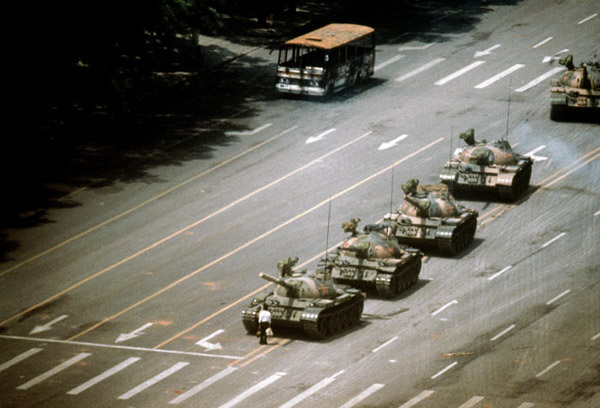Fred Ritchin is professor and associate chair of the Department of Photography and Imaging at New York University’s Tisch School of the Arts, and codirects the Photography and Human Rights Program at NYU with the Magnum Foundation. He also is director and cofounder of PixelPress, which works with humanitarian groups to develop visual projects dealing with social justice issues. Ritchin has written for Aperture, Le Monde, the New York Times, and the Village Voice, and authored several books, including the prescient In Our Own Image: The Coming Revolution in Photography (Aperture, 1990, 2000) and the more recent After Photography (2009).
Picking this up, being the first academic tone I have read for 25 years, was a little a daunting. But reading Ritchin’s book was not a painful process - it is accessible, filled with interesting asides and references and more worthy than wordy. As I read it over a number of sittings (what else does a man do when commuting other than Facebook) I dropped the thread a few times and am left not quite sure where the book started and ended. While the book is not propaganda - it has a viewpoint but its not didactic - I did find myself waiting for the point - and felt a little let down when it ended more open than closed.
Some thoughts …
A central theme is that in a world where photography is ubiquitous* the role of the professional photographer is unclear - perhaps redundant. From a philosophical perspective this seems regressive (like sacking all the professional footballers because we have Fifa 2014 on playstation). From a personal perspective it is scary (like training as a steam train driver in 1950). The book suggests the fourth estate (http://en.wikipedia.org/wiki/Fourth_Estate) is being circumvented - overwhelmed perhaps - but the 'fifth estate’ or blogosphere. Economically this seems true. My own recent experience of trying to flog pictures of a house fire to the local press bares out the fact that citizen journalism is more than anything else free. If professional documentarians and journalists can weather this storm is uncertain.
 This is a time where the big picture still has some place - but it is more likely to come from an amateur than a professional. Ritchin compares the Nick Ut’s seminal picture of a burning girl to the iPhone images from Abut Gharib. The later are no less horrific - indeed their context as personal snap shots adds to their brutality. The conflict photographer has danced a merry dance around the legitimacy of their profession (why take pictures when they can help) - is it right for them to wring their hands and now dismiss the citizen photographer who’s presence at times of conflict is perhaps less open to accusations of voyeurism ?
This is a time where the big picture still has some place - but it is more likely to come from an amateur than a professional. Ritchin compares the Nick Ut’s seminal picture of a burning girl to the iPhone images from Abut Gharib. The later are no less horrific - indeed their context as personal snap shots adds to their brutality. The conflict photographer has danced a merry dance around the legitimacy of their profession (why take pictures when they can help) - is it right for them to wring their hands and now dismiss the citizen photographer who’s presence at times of conflict is perhaps less open to accusations of voyeurism ?The book seeks out some new roles, disguises and modes for the professional documentarian - partners of NGO’s; ‘artists’ creating work that solicits a dialogue; curators of crowd sourced imagery. Each seem worthy and there are some dynamic individuals pursuing some interesting endeavours. As a novice I was delighted to be introduced to both some of these new guns and to some more classical exponents of the art. These include Media Storm; Jeff Wall’s Dead Troops Talk; Nina Berman’s iconic wedding pictures; Marcus Beasdale’s work with Human Rights Watch; the poetic personal testament in Philip Toledano’s Day’s with My Father; Richard Avendon; and JR.
There is a very interesting section on the issues surrounding working with NGO’s - and how many recognise that McCullinesque images of starvation and the like can objectify the individuals It suggests too that the first world’s view of Africa in particular has been distorted by a diet of sensationalist images that hide the reality of life on the continent. The NGO’s and charities commissioning image makers set out manuals and rules of engagement that seem dictatorial - but are well meant and with good purpose.
Some quotes …
Fred Ritchin - ‘The photographers sanctioned role as societal scribe meant that the imagery was received as more than voyerism’.
Garry Winogrand - ‘I photograph to see what things look like when they are photographed’.
Martin Parr - ‘I shoot interesting subject matter and disguise it as entertainment. That’s what people want in magazines.’
Fred Ritchin - ‘A photograph … that provokes questions, whether intentional or not, better allows the viewer to engage with the subject’
China Government (about the famous Tiananmen Square picture) - ‘Anyone with common sense can see that if our tanks were determined to move on, this lone scoundrel could never have stopped them. This scene … flies in the face of Western propaganda. It proves that our soldiers exercised the highest degree of restraint’.
(*3.500 images are uploaded to Facebook every second; as Grayson Perry puts it "We live in an age now where photography rains on us like sewage from above"


